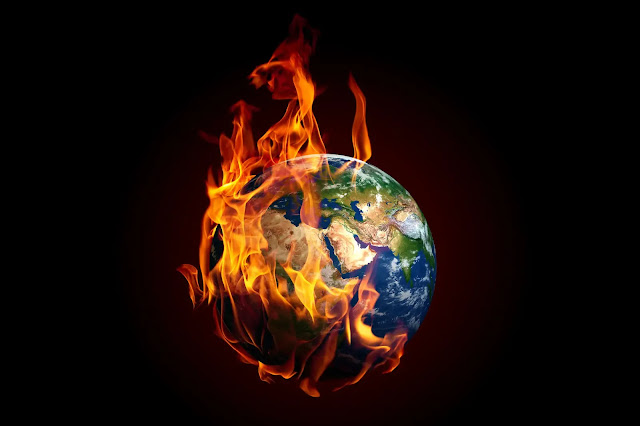I like thinking inductively, bringing together disparate symbolic entities to see how their intermingling can lead to interesting new meanings.
Plate Block of Scott 1107 International Geophysical Year
So, I have owned this rather striking block of commemorative postage stamps with selvage and plate number for years, but was never curious enough to interpret exactly what it was celebrating. Not until now. It was celebrating a time of global scientific collaboration between the democratic West, and the Communist East during the height of the Cold War. But they were also competing on the world stage for scientific advances, which could lead to technological breakthroughs that reward countries with influence, wealth, and prestige. The designated time of this friendly rivalry in earnest was between July 1, 1957 and December 31, 1958, and was named International Geophysical Year. An example of binary technological achievements during that time was the October 4, 1957 Soviet launch of the world’s first satellite, Sputnik and the January 31, 1958 American response launch of Explorer 1. The stamps were rendered with bi-color engravings that necessitated using a double run through presses of different plates, one for the frame and the other for part of the central vignette, each with a separate ink color.
What made me want to “unearth” these stamps was an intriguing Netflix drama, The Billion Dollar Code. It told the story of the origins of what became Google Earth, the supposedly free consciousness-altering, Internet-based computer program that provides a seamless visualization of the earth in a massively large spatial navigation app. This revolutionary program all of us use all the time everywhere from the palm of our hand has had an impact in tandem with the 1968 Apollo 8 moon mission picture that captured for the first time the whole Earth, the entire planet, our only home since the dawn of our species, rising up as Apollo emerged from the other side of the moon. Problem is that Google didn’t invent Google Earth. A rag tag team of young German digital artists did in the heady days after the fall of the Berlin Wall, which symbolized the end of that Cold War.
That’s how I learned about the event known as Burning Man.
Burning Man is an annual technofest held during the week before Labor Day on an expansive, dry lake bed of caustic alkaline dust in a remote Nevada desert. Tens of thousands attend. Though “It aims to be an undefinable event, somewhere between a celebration of counterculture and a spiritual retreat”, it can include friendly collaboration between innovative adversaries, sort of like International Geophysical Year, often with Earth-shattering consequences. According to the Netflix docudrama, it was at an early Burning Man event that the German progenitors of the way to effortlessly glide over Earth in seconds to any specific latitudinal and longitudinal point on the ground seemed to have given away to others strategic hints to the code in their software that explained the capabilities of their Earth-navigating program they called “TerraVision.” These hints would not be lost on “friendly” attendees who would end up working for Google.
But the
Earth-shattering consequences I was thinking about did not include the digital
accomplishment akin to the freedom of Icarus’ flight with feathery bird wings
in ancient Greek myth or even the failed lawsuit brought against Google over their
alleged infringement of the TerraVision patent in a New York courtroom in
2017. It is how one can now more poignantly interpret the image on those postage stamps about which the Google Earth docudrama had reminded me. We must recognize an eerily accidental, yet significant symbolic Freudian slip the stamp designers made.
I had wondered about the orb and the surrounding fire in the stamp’s vignette, why the earth was black and what the fire meant to convey, perhaps a stylish symbol for the fire left behind on the launch pads of rockets putting Landsat satellites in orbit to probe for Earth's secrets. After all, the stamps were commemorating the world’s collaborative scientific advances studying the earth during International GEOphysical Year.
It is rather a rendering of the Sun. Early telescopic photography of our intensely, blindingly bright star used filters to black out the orb so as to be able to make visible the corona, the sun’s effluence of matter that would provide clues to its content and energy, and which was represented by the phalanx of fire in the stamp’s vignette.
Showing a fiery sun, not our Earth, was a misunderstanding. It led the engraver to scratch into die metal an incorrect symbol for that year’s scientific exploration of Earth. The benefit is that I can use it to more accurately interpret my stamps. On them is Burning Man. Michelangelo’s God innervates and animates a piece of mud, turning it into a creature who is freed from blind, deterministic instinct to choose his destiny. Man’s choices often include the decision not to honor God or the biodiverse, and thus efficient and stable, home God has made for him; rather, to use his self-seeking and self-serving nature to exploit the earth until it is left burning.
Let’s rename Burning Man “Man Burning Down Our House". It is an appropriate title of an “Apocalypse,” a topic of an earlier post used to illicit human-caused global climate change.
What is amazing here is how blind to all else the pursuit of wealth can make us. This writer is like Nero who fiddles while Rome burns. Even worse: there's a pile of money to be made on worsening weather. Let the burning happen. Bring on class 5 hurricanes. Grab that cash and make a stash. There is now, for instance, enough business for an entire industry of competitive players who hire wage slave workers to travel from extreme weather disaster clean up to the next like migrant workers following the shifting weather belts that determine the timing of the harvests.
I found the following excerpt about Burning Man, which I redacted with additions in parentheses.
“Burning Man is all about self (serving)-expression and the rejection of (overt) corporatism and (underlying) capitalism. Instead of using money (the love of which is the root of all evil), attendees borrow, barter and trade for what they need (which are things to sustain the person, not wealth to enrich). People create a fleeting, self-sustaining community that (theoretically) leaves no trace or trash upon its completion.”
The following are tenets of the Burning Man festival, which I also redacted with additions in parentheses.
Radical inclusion: Anyone may be a part of Burning Man (especially those sponsored by the wealthy tech industry elites).
Gifting: Burning Man is devoted to acts of gift giving (of gifts easily procured by those exploits that are dependent upon voltage or magnet polarization-generated securities).
·
Decommodification: In order to preserve the spirit of gifting, our community seeks to create social environments that are unmediated by (read: nurtured by very well disguised) commercial sponsorships, transactions (read: not conducted publicly) or advertising (that is restricted to word of mouth).
·
Radical self-reliance: Burning Man encourages the individual to discover, exercise and rely on their inner resources (and financial support proffered by the coffers of technological free enterprise; it costs the typical burner $800 for a pass and parking space and, adding to this transportation, often by plane, or private jet if attendees are influencers or the wealthy tech elite, food, 1.5 gallons of water per person per day, 12” rebar stakes to anchor a tent against fierce winds, and other survival-related supplies can easily push the cost into the $thousands according to Insider).
·
Radical self-expression: arises from the unique gifts of the individual (recruited by techno entities for their remarkable talents, especially visionary intuition).
Burning Man Celebrates a Chosen Mind Set
·
Communal effort: Our community values creative cooperation and collaboration (read: teamwork that will be rewarded through private free enterprise later).
·
Civic responsibility: Community members who organize events should assume responsibility for public welfare (Burning Man requires signing an indemnity agreement.) and endeavor to communicate civic responsibilities to participants (True believing acolytes in the spirit of Burning Man self-govern as a collective).
Leaving no trace: Our community respects the environment. We are committed to leaving no physical trace of our activities wherever we gather (which is now hard to achieve when the ancient desert playa is rendered a mud wrestling quagmire by extreme weather events due to climate change wrought by technology. After the unprecedented hurricane of 2023’s torrential rains temporarily stranded the city of thousands, myriad blown jetsam termed MOOP---matter out of place---included orphaned tents that lay caked in dried muck, and toilet paper and carpets churned into the sodden dirt.).
·
Participation: Our community is committed to a radically participatory ethic. We believe that transformative change, whether in the individual or in society, can occur only through the medium of deeply personal participation (made capable by conjuring a pairing of intro-personal, quasi-religious inclusion and a sense of exclusivity).
Immediacy: Immediate experience is, in many ways, the most important touchstone of value in our culture (especially when tied to an ethic of Epicurean egoistic hedonism).
Mad Max: Desperate for Gas after the Apocalypse
















